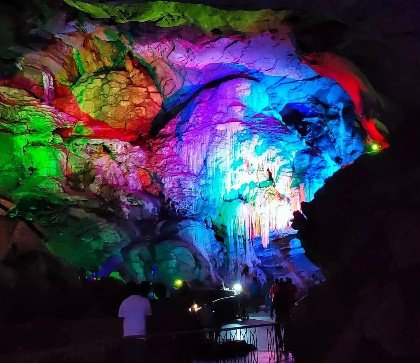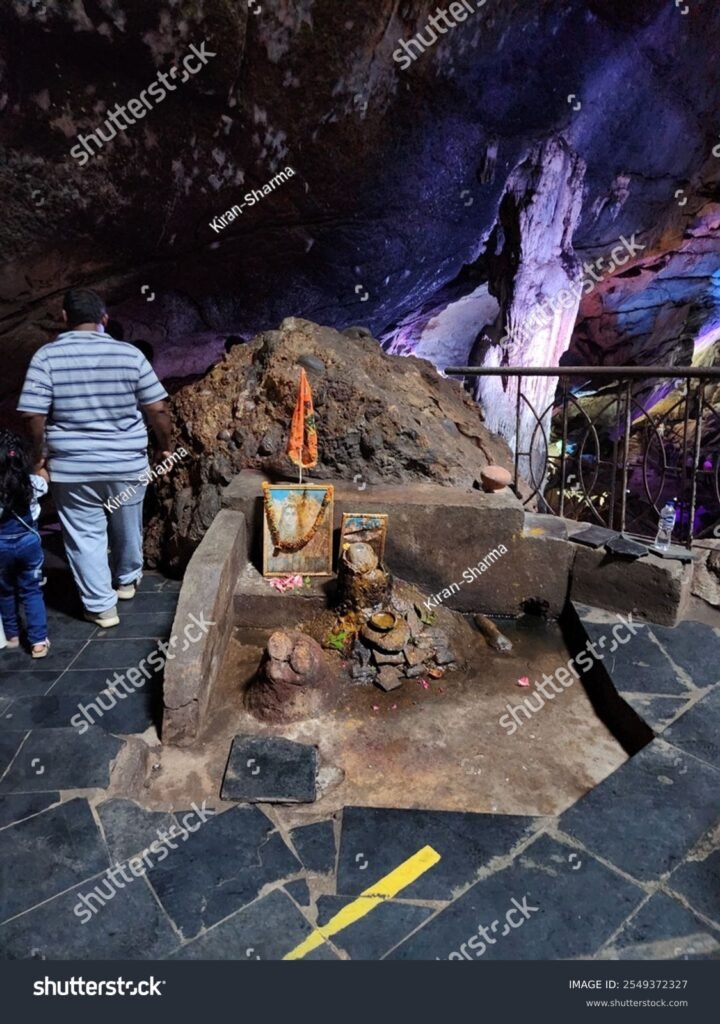“Borra Caves: A Geological Wonder in Vizag’s Backyard”
Borra Caves are ancient limestone formations with stunning stalactites, mystical shapes, colorful lighting, spiritual legends, and cool, echoing chambers nestled in the Ananthagiri Hills near Araku.
Borra Caves – A Natural Marvel Beneath the Hills

Located about 90 km from Visakhapatnam and just 35 km before Araku Valley, Borra Caves are one of the largest and deepest caves in India, formed over millions of years by the flow of the Gosthani River. At an elevation of about 705 meters above sea level, these limestone caves are a geological wonder, renowned for their unique formations and mystical beauty.
1. Formation & History

The Borra Caves were discovered in 1807 by British geologist William King. The natural caves were formed by the constant flow of water dissolving the limestone deposits, creating fascinating stalactite and stalagmite formations over centuries.
The caves stretch to a depth of about 80 meters and are spread across an area of roughly 1 sq. km. They are believed to be over a million years old and are an important site for both geologists and tourists.
2. Inside the Caves
As you enter, the first thing you notice is the cool, damp air and the natural formations lit up by colorful lights. The interiors are a labyrinth of chambers filled with formations that resemble animals, human figures, Shiva Lingams, and other intriguing shapes — often interpreted differently by each visitor.

Some of the most iconic formations include:
- Shivalingam with a cow-shaped structure above, considered sacred by locals.
- Mushroom-shaped formations.
- Mother-child and human brain-like structures.
- Crocodile and temple-like shapes naturally carved by water and minerals.
The play of artificial lights inside the caves creates a surreal experience, making it a photographer’s paradise.
3. Religious Significance
Borra Caves are also revered as a spiritual site. The presence of a Shivalingam deep inside the cave and the cow-shaped structure (Kamadhenu) dripping water over it is believed to be divine. Locals often perform pujas here, especially during Shivratri.
4. Gosthani River Origin

The Gosthani River is believed to originate from these caves. The river’s underground flow adds to the mystique of the caves. Its water has slowly sculpted the limestone, contributing to the intricate shapes that visitors marvel at today.
5. How to Reach
- By Train: The Vizag-Kirandul passenger train stops at Borra Guhalu station, which is a short walk from the caves.
- By Road: Easily accessible via Araku Road; taxis and local buses are available.
- On the Way to Araku: Most visitors stop at Borra Caves while heading to or from Araku Valley.
6. Best Time to Visit
October to March is the ideal time to explore the caves due to the pleasant weather. It’s advisable to avoid the rainy season as the cave floor can get slippery.
7. Entry Timings & Fees

- Open: 10:00 AM to 5:00 PM (all days)
- Entry Fee: Nominal charges for adults, children, and cameras.
- There’s a separate parking area and small shops for snacks and souvenirs.
8. Nearby Attractions
- Ananthagiri Coffee Plantations
- Katiki Waterfalls: Just 7 km from Borra Caves, a short trek through the forest leads to this refreshing waterfall.
- Tribal Villages: Experience the culture and lifestyle of local tribes nearby.
9. Tips for Visitors
- Wear comfortable shoes with good grip — cave floors can be uneven and slippery.
- Carry a flashlight if you want to explore the darker corners.
- Respect the natural environment — avoid touching formations and littering.
- It’s cooler inside, so a light jacket is a good idea even in warmer months.

